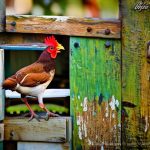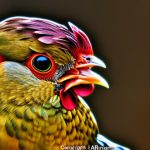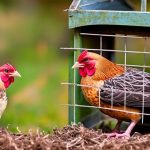Designing a fence that prevents chicken access while permitting dog passage requires careful consideration of multiple factors. Chickens are known for their ability to exploit small openings and gaps, making containment challenging. Conversely, dogs require sufficient space to move freely without feeling confined.
Achieving a balance between these conflicting needs is complex but feasible with proper planning and implementation. Key aspects to address include fence height, material selection, spacing between components, and potential weak points in the barrier. By understanding the behavior and physical capabilities of both chickens and dogs, it is possible to create an effective boundary that meets the requirements for both species.
Table of Contents
- 1 Types of fences
- 2 Considerations for chickens and dogs
- 3 Designing the fence
- 4 Installation and maintenance
- 5 Alternatives and additional measures
- 6 Conclusion and final recommendations
- 7 FAQs
- 7.1 What is a fence to keep chickens out but let dogs through?
- 7.2 What are the common materials used for this type of fence?
- 7.3 How does a fence to keep chickens out but let dogs through work?
- 7.4 What are the benefits of using this type of fence?
- 7.5 Are there any considerations to keep in mind when installing this type of fence?
Key Takeaways
- The issue of needing a fence that keeps chickens out but allows dogs to pass through can be a challenge for pet owners.
- Different types of fences, such as wire mesh, electric fences, or adjustable gates, can potentially solve the problem.
- Understanding the specific needs and behaviors of chickens and dogs is crucial when designing the fence.
- Tips and considerations for designing a fence that effectively keeps chickens out while allowing dogs to pass through easily are important to consider.
- The process of installing the fence and necessary maintenance should be discussed to ensure it continues to serve its purpose.
Types of fences
Wire Mesh and Electric Fencing
One option is wire mesh fencing, which can be effective in keeping chickens at bay while still allowing dogs to move freely. Another option is electric fencing, which can provide a strong deterrent for chickens while not posing a threat to dogs if installed and maintained properly.
Adjustable Gates and Picket Fences
Additionally, adjustable gates can be a useful solution, as they can be set at a height that prevents chickens from passing through while still allowing dogs to easily pass underneath. A picket fence with closely spaced slats can also effectively keep chickens out while allowing dogs to pass through due to the narrow gaps between the slats.
Chain-Link Fences with Chicken Wire Extensions
Another option is a chain-link fence with a chicken wire extension at the bottom. The chain-link portion of the fence provides a barrier for dogs, while the chicken wire extension prevents chickens from squeezing through the gaps.
Choosing the Right Fence
It’s important to carefully consider the pros and cons of each type of fence in order to determine which one will best meet the needs of both chickens and dogs. By weighing the advantages and disadvantages of each option, you can choose the fence that works best for your specific situation.
Considerations for chickens and dogs
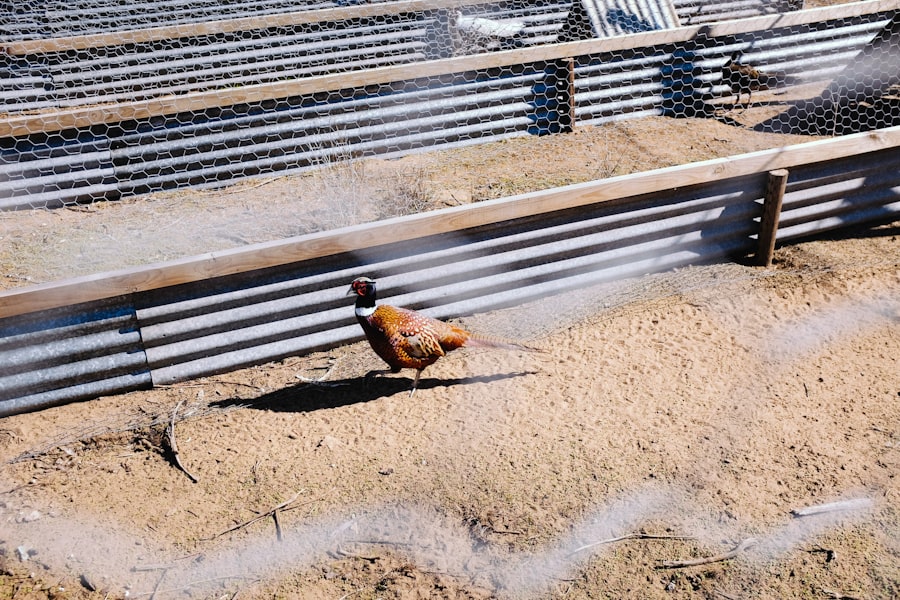
When designing a fence that needs to keep chickens out while allowing dogs to pass through, it’s important to take into account the specific needs and behaviors of both animals. Chickens are known for their ability to squeeze through small spaces and are also skilled at flying short distances. Therefore, any fence designed to keep them out must take these factors into consideration.
On the other hand, dogs require freedom of movement and may become anxious or frustrated if they feel confined by a fence. It’s important to design a fence that allows dogs to move through it easily and without feeling restricted. Chickens are also known for their ability to scratch and peck at the ground, so any fencing material used must be durable enough to withstand these behaviors.
Additionally, it’s important to consider the height of the fence, as chickens are capable of flying short distances and may attempt to fly over a low barrier. For dogs, it’s important to consider their size and breed when designing a fence, as larger dogs may require a higher gate or wider opening to pass through comfortably. Understanding the specific needs and behaviors of both chickens and dogs is crucial when designing a fence that will effectively meet the needs of both animals.
Designing the fence
When designing a fence that effectively keeps chickens out while allowing dogs to pass through easily, there are several tips and considerations to keep in mind. First and foremost, it’s important to choose a fencing material that is sturdy and durable enough to withstand the scratching and pecking of chickens. Wire mesh or chain-link fencing with small gaps can be effective in keeping chickens out while still allowing dogs to pass through easily.
Additionally, it’s important to consider the height of the fence, as chickens are capable of flying short distances and may attempt to fly over a low barrier. Adjustable gates can also be a useful solution when designing a fence for this purpose. By setting the gate at a height that prevents chickens from passing through while still allowing dogs to easily pass underneath, you can effectively meet the needs of both animals.
It’s also important to consider the overall layout and design of the area in question when designing the fence. Taking into account any natural barriers or obstacles can help in creating a more effective fencing solution. By carefully considering these tips and considerations, you can design a fence that effectively keeps chickens out while allowing dogs to pass through with ease.
Installation and maintenance
Once the design for the fence has been determined, it’s important to carefully consider the process of installing the fence and any necessary maintenance to ensure it continues to serve its purpose. Proper installation is crucial in ensuring that the fence is effective in keeping chickens out while allowing dogs to pass through easily. It’s important to securely anchor the fence posts and ensure that all connections are strong and secure.
Additionally, regular maintenance is essential in ensuring that the fence continues to serve its purpose over time. Regular inspections should be conducted to check for any signs of wear or damage, and any necessary repairs should be made promptly. It’s also important to regularly check for any signs of wear or damage caused by the scratching and pecking of chickens, and make any necessary repairs as needed.
By carefully considering the installation and maintenance of the fence, you can ensure that it continues to effectively meet the needs of both chickens and dogs over time.
Alternatives and additional measures
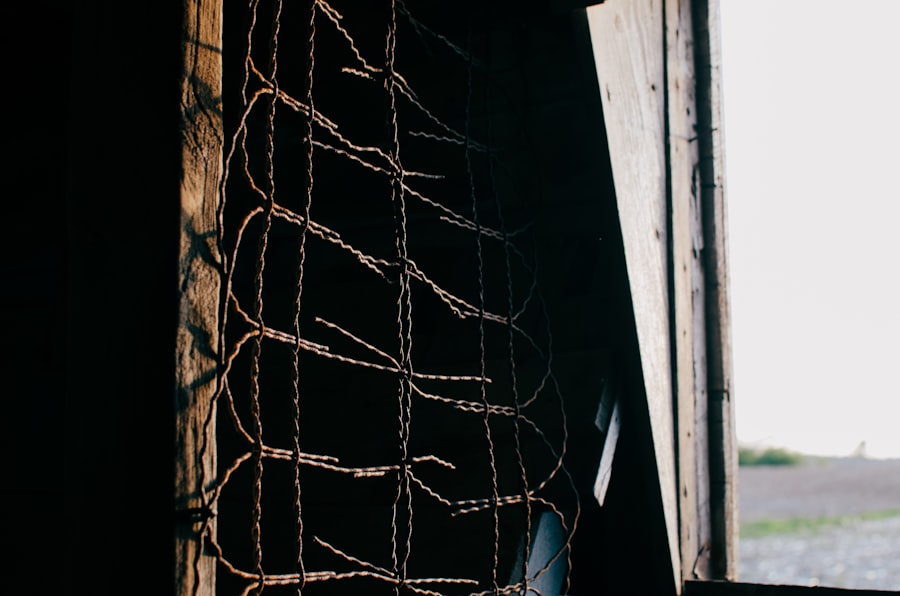
Deterrents and Barriers
One option is to use deterrents such as motion-activated sprinklers or sound devices that can startle chickens and discourage them from entering the area. Another option is to use natural deterrents such as planting thorny bushes or shrubs around the perimeter, which can create a barrier that is unappealing to chickens.
Managing Interactions between Chickens and Dogs
Additionally, creating designated areas for both chickens and dogs can help in managing their interactions with each other. By creating separate spaces for each animal, you can help minimize any potential conflicts or issues that may arise.
Eliminating Attractants
It’s also important to consider any potential attractants for chickens, such as food sources or nesting areas, and take steps to minimize or eliminate these attractants in order to discourage chickens from entering the area.
Creating an Effective Solution
By carefully considering these alternative methods and additional measures, you can further deter chickens from entering the designated area and create a more effective solution for keeping them out while allowing dogs to pass through.
Conclusion and final recommendations
In conclusion, creating a fence that effectively keeps chickens out while allowing dogs to pass through is certainly achievable with the right approach. By carefully considering the specific needs and behaviors of both animals, choosing an appropriate fencing material, and designing an effective layout, you can create a solution that meets the needs of both chickens and dogs. Proper installation and regular maintenance are crucial in ensuring that the fence continues to serve its purpose over time, and by considering alternative methods and additional measures, you can further deter chickens from entering the designated area.
In order to create a fence that effectively keeps chickens out while allowing dogs to pass through, it’s important to carefully consider all of these factors and take a comprehensive approach in designing and implementing a solution. By doing so, you can create a more harmonious environment for both animals while effectively meeting their individual needs.
If you’re looking for a solution to keep chickens out but let dogs through, you may want to consider building a garden chicken coop. This type of coop allows your chickens to roam freely in a designated area while keeping them out of your garden. To learn more about how to build a garden chicken coop, check out this helpful article on PoultryWizard.
FAQs
What is a fence to keep chickens out but let dogs through?
A fence to keep chickens out but let dogs through is a type of fencing designed to prevent chickens from entering a specific area while allowing dogs to pass through freely.
What are the common materials used for this type of fence?
Common materials used for this type of fence include wire mesh, chain link, and electric fencing. These materials are chosen for their ability to keep chickens out while allowing dogs to pass through without difficulty.
How does a fence to keep chickens out but let dogs through work?
This type of fence typically features openings or gaps that are large enough for dogs to pass through, but too small for chickens to enter. The design of the fence allows dogs to move freely while effectively keeping chickens out of the designated area.
What are the benefits of using this type of fence?
The main benefit of using a fence to keep chickens out but let dogs through is the ability to control the movement of animals in a specific area. This can be particularly useful for keeping chickens away from gardens or other areas where they may cause damage, while still allowing dogs to move about freely.
Are there any considerations to keep in mind when installing this type of fence?
When installing a fence to keep chickens out but let dogs through, it’s important to consider the size and breed of the dogs and chickens involved. The fence should be designed to accommodate the specific needs of the animals in question to ensure its effectiveness.
Meet Walter, the feathered-friend fanatic of Florida! Nestled in the sunshine state, Walter struts through life with his feathered companions, clucking his way to happiness. With a coop that’s fancier than a five-star hotel, he’s the Don Juan of the chicken world. When he’s not teaching his hens to do the cha-cha, you’ll find him in a heated debate with his prized rooster, Sir Clucks-a-Lot. Walter’s poultry passion is no yolk; he’s the sunny-side-up guy you never knew you needed in your flock of friends!


